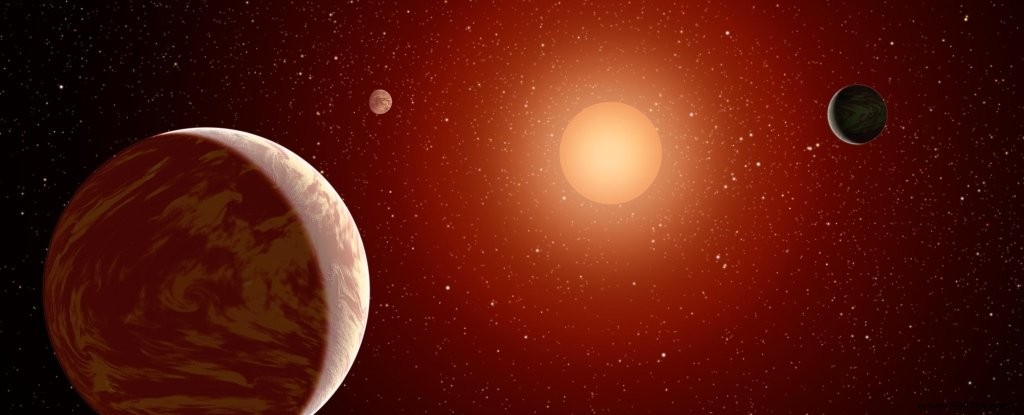A team of astronomers recently used a radio technique to probe the activity of a variety of nearby red dwarfs. In some cases, they suspect that these radio signals may indicate the presence of previously undetected exoplanets.
In 2020, a team observed unusual radio signals from a nearby red dwarf star known as GJ1151. It then turned out that these radio waves were produced by the interaction of an exoplanet orbiting its host, resulting in the formation of the aurora borealis. This phenomenon had already been predicted more than thirty years ago, but it had never been directly observed.
In these studies, the same researchers relied on the LOFAR telescope (Low Frequency Array, the most powerful radio telescope in the world) to scan one eighth of the sky of the north, ultimately isolating radio emissions from nineteen red dwarf stars located between twelve and one hundred and fifty light years . In a pair of papers published in Nature Astronomy and The Astrophysical Journal Letters, the latter reveal more details about GJ1151 and point to the presence of three other possible exoplanets around these nearby low-mass stars.
“This discovery is a milestone for radio astronomy and could potentially lead to the discovery of planets throughout the galaxy “, said Dr Benjamin Pope, from the University of Queensland.
Specifically, the four stars involved are "quieter" than the others and should not produce such signals unless a planet is moving through their magnetic field.
The authors make a comparison with the moon Io, of Jupiter. Decades ago, it was indeed accidentally discovered that Jupiter emitted circularly polarized radio waves, now attributed to volcanic eruptions on Io that erupted material into space before filling Jupiter's environment.
Remember that our planet also generates aurora borealis and australis which also emit powerful radio waves. However, we know that these auroras come from the interaction of the Earth's magnetic field with the solar wind.

According to the authors, these possible new planets would evolve very close to their star, completing orbits of two to five days . Their hosts, on the other hand, would be so "cold" that they could still move around the habitable zone.
The next step will be to confirm the presence of these exoplanets. "We can't be 100% sure that these four stars actually harbor planets, but we can say that a planet-star interaction is the best explanation for what we're observing “, underline the researchers. "This discovery is a milestone for radio astronomy and could potentially lead to the discovery of planets throughout the galaxy “.